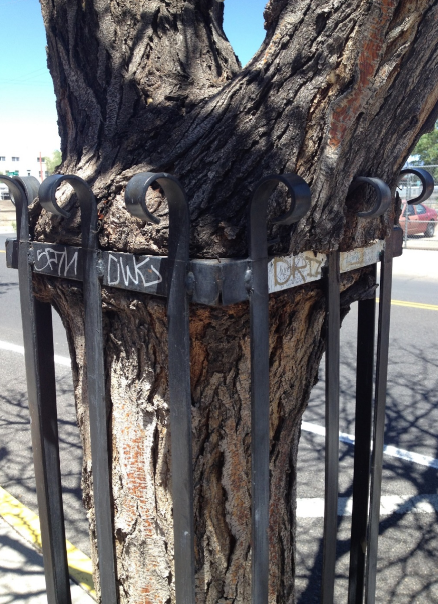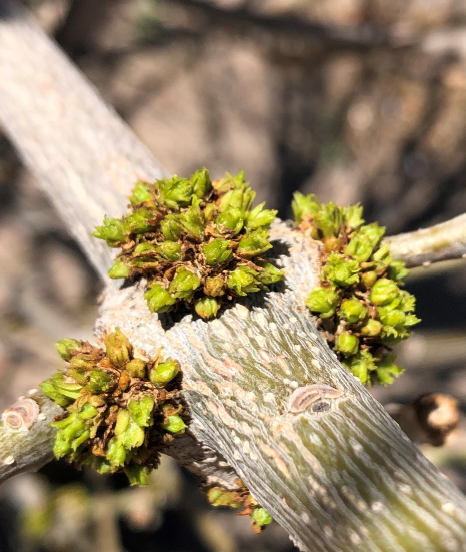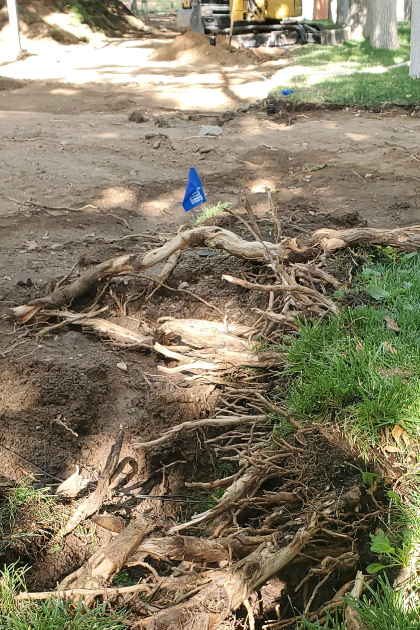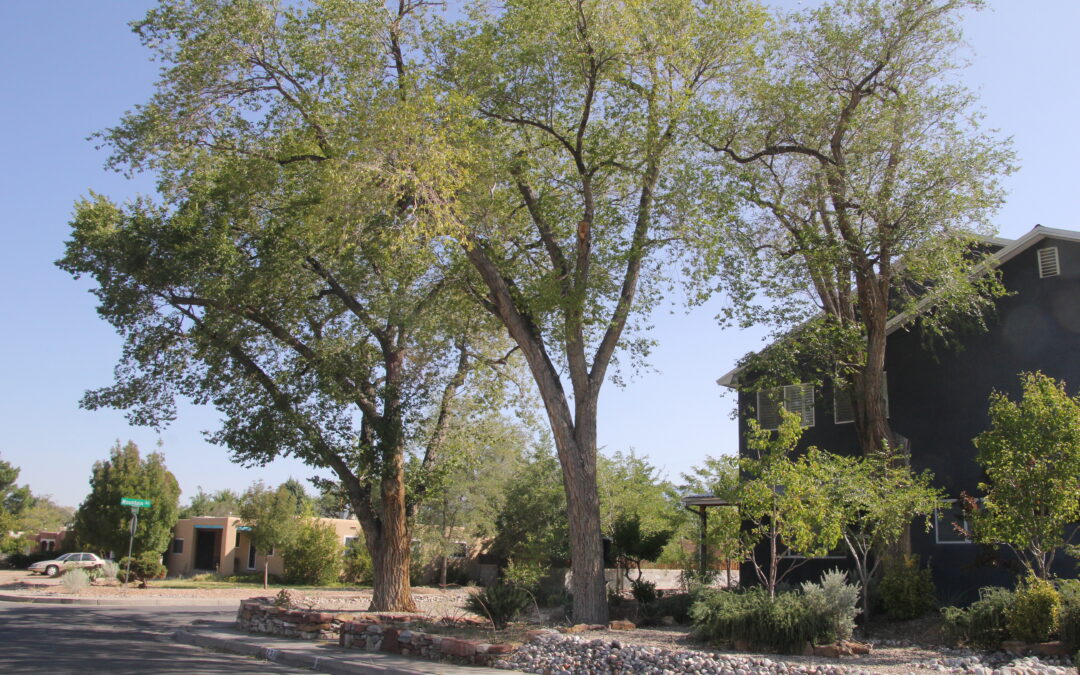Nothing adds the same quality and value to a landscape as a healthy mature tree. The benefits include cooler outdoor spaces, cooler homes, aesthetic appeal, carbon capture, stormwater mitigation and more. There are some key things to think about when it comes to keeping your big old tree happy.
What are the key parts of the tree and what do they do? All the parts are important, many are redundant, and how they play together really matters. The redundant parts are leaves, small branches and small roots underground. While critical for tree health, the tree can lose some of any of these without suffering fatal damage; the tree will, with time and to the best of its ability, replace those lost parts with new growth.
The fine roots explore for water and minerals in the soil, hopefully with the help of symbiotic soil fungi. Only the youngest, smallest roots (those that haven’t even grown bark yet) take in water, like tiny sponges. These roots grow when and where soil moisture is available and die off when the soil gets too dry. Trees may have several flushes of absorbing roots growing and dying back over a season. Once in the roots, water moves up successively larger roots as it travels toward the stem.
There is one part of the tree that is not redundant. This is the root crown, or root flare, where the ropy wood of the root system changes into the blocky wood of the stem. The happiest, healthiest trees have a strong root flare visible above the soil line. These root shoulders act like buttress supports for the huge load of wood and foliage being acted on by gravity and wind.
As water moves up the trunk, it travels in sapwood (or xylem) — living wood just underneath the bark layers. Outside the sapwood is a thin ring called the cambium, cells that make new cells that make new cells … for as long as the tree lives. Outside that layer is the inner bark (or phloem), a green spongy layer with many functions, including moving sugars and other metabolites from the leaves to wherever they need to go. These three layers — xylem, cambium and phloem — constitute the “living rind” of the tree and are protected by the dead but intact outer bark layers. The central wood, or heartwood, is dead but intact as well.
Leaves out at the end of the small branches are busy converting sunlight energy into stored chemical energy in the form of sugars. These are then used as fuel and as building blocks for the tree to power its ongoing life functions and make the complex chemicals needed to do so.
What harms a tree? Things that harm the root system (soil compaction, drought, heat, chemicals), things that damage the root flare (stem girdling roots, mowers, construction), things that damage the living rind (wire girdling, kids with hatchets, vehicles) and things that damage leaves (over pruning, certain herbicides, heat). There are feedback loops, especially between the roots and the leaves. Root damage that reduces water uptake leads to leaves making less sugar which means less resource to grow new roots. Herbicide damage that deforms leaves leads to less sugar feeding root function as well as less pull on the water, both leading to less water and nutrient uptake going back to the leaves.
So, here’s what you do: Avoid those harmful things!
- Protect roots by covering the soil with 3 or 4 inches of arborists’ wood chips. This cools soil, reduces soil water loss, cools air above, breaks down and feeds minerals into the soil, and promotes growth of beneficial soil fungi. Avoid cutting roots when possible; when necessary, cut as few as possible and cut as far from the trunk as possible. Don’t compact soil by dumping gravel all over it or parking on it. Don’t apply herbicides to the root zone, which is larger than the canopy above.
- Protect the leaves by avoiding over pruning. Most mature trees don’t need regular pruning, and, in fact, that should be avoided. Pruning takes away energy sources (leaves) and creates energy sinks (wounds that must be dealt with). Excessive pruning can send a tree into a starvation spiral. Prune for specific goals. Avoid herbicides like those found in weed-n-feed fertilizers.
- Protect the living rind by taking away Junior’s hatchet. More seriously, don’t tie wires or ropes around the trunk and branches unless you check them every year to make sure they aren’t girdling the tree. Lastly, don’t run into them with your car!



Other articles that might be of interest:
The Balancing Act of Watering Trees in the Fall and Winter
How to make a Tree Watering System for your established and mature trees
Tips to Keep Mature Trees Healthy

Have a question about the article? AskAnExpert@abcwua.org

